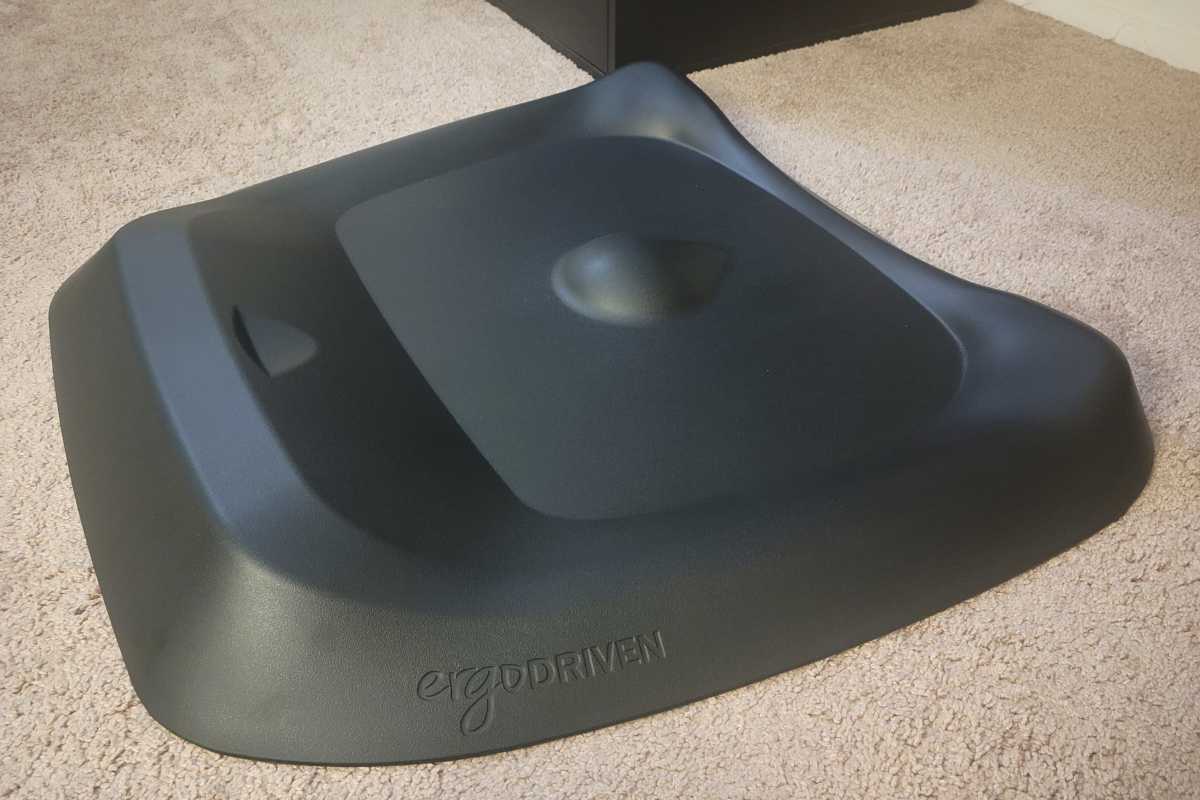As I approach my late 30s, back pain is a persistent concern. Sitting at a desk all day every day for most of my life has taken its toll on me, and that’s why I finally switched to a standing desk—but making that switch stick wasn’t simple.
You see, I’ve actually “switched to a standing desk” half a dozen times over the last decade, and each time I gave up after only a few weeks and went back to the comfort of my office chair. Standing did have a positive impact on my posture, concentration, and productivity, but it came with two giant downsides: painful feet and fatigue.
I loved the idea of a standing desk and what it could do for me, but the reality of it was something else. I couldn’t stand it. I’d traded one pain for another, and I just felt drained at the end of every day—and that was true even after I tried a few anti-fatigue mats. Every year or two, I convinced myself to try again, and every time it was the same old story.
Until this year. I tried something new, and it actually worked.
There’s a unique standing desk mat on the market called the Topo Comfort Mat, and I kept hearing praises for it across Reddit. Instead of being flat, it has weird contours and bumps and terrain all around it. And instead of being soft or memory foamy, it’s made of a semi-firm engineered material that’s solid to stand on but still has a bit of give. It’s unlike any anti-fatigue mat I’ve ever seen. I was skeptical.
The idea is that you’re supposed to move around and shift your weight and not stay in any one position for too long when at a standing desk, and the Topo’s unusual design gives me various ways to do that. I can prop one foot up while leaning on the other, or I can stand on the big hilly part to stretch my calves, or I can use the corners to massage the heels and balls of my feet when they get sore. (The massaging comes in clutch towards the end of the day!) All this while standing on the semi-firm material that truly feels like it’s absorbing my fatigue.

Joel Lee / Foundry
I like that it’s sizeably large—it measures 29 inches by 26.25 inches—and that allows me to spread my legs wide and stand on the outer rim. And when I get tired of that, I can bring my feet into the center and stand on the round nub for more massage-while-standing action. Yet it’s still small enough that I can slide it under my desk when I’m done, and it’s light enough that sliding it in and out isn’t a hassle.
I used to hate my standing desk because it always left me feeling wiped out with sore feet and tired legs, and occasionally it got bad enough that I had to take breaks every 15 minutes. But with the Topo standing mat, I can stand the whole day and feel only mildly sore. (Standing all day is physically taxing no matter what. Breaks are still recommended).
I’ve been using it for the last five months, and it’s been an absolute game-changer for me, as I can now tolerate my standing desk enough to avoid the postural issues that I get when sitting for too long.
The only downside to the Topo Comfort Mat is its price. At $119, it’s way more expensive than other anti-fatigue mats, and I wouldn’t blame you for balking. I was the same way. I passed it by for a few years before I finally pulled the trigger on it, and all I can say is I wish I’d gotten it earlier. If you struggle with standing desks, give it a chance—if you can afford it.
Melden Sie sich an, um einen Kommentar hinzuzufügen
Andere Beiträge in dieser Gruppe

PC gaming is getting crazy expensive, at least if you want the latest

Sonos is one of the better audio brands out there, but we rarely see

Gigabyte’s Aero line of laptops is intended for media pros, those who

Over the years, Netflix has made their streaming apps available acros

For years, the URL bar in your browser has done double duty: you can

If you hate juggling numerous charging blocks and power adapters, the

Last week, ESPN put a price tag on the standalone streaming service i
